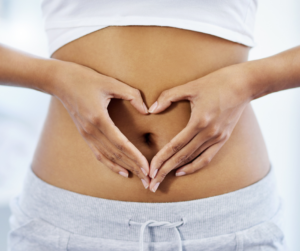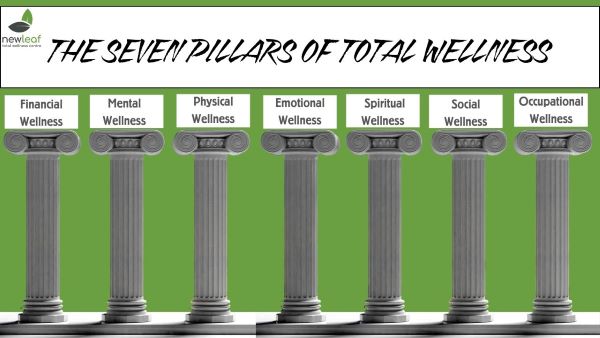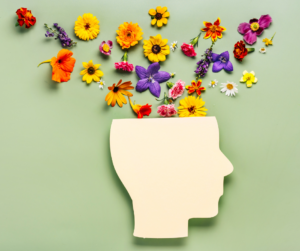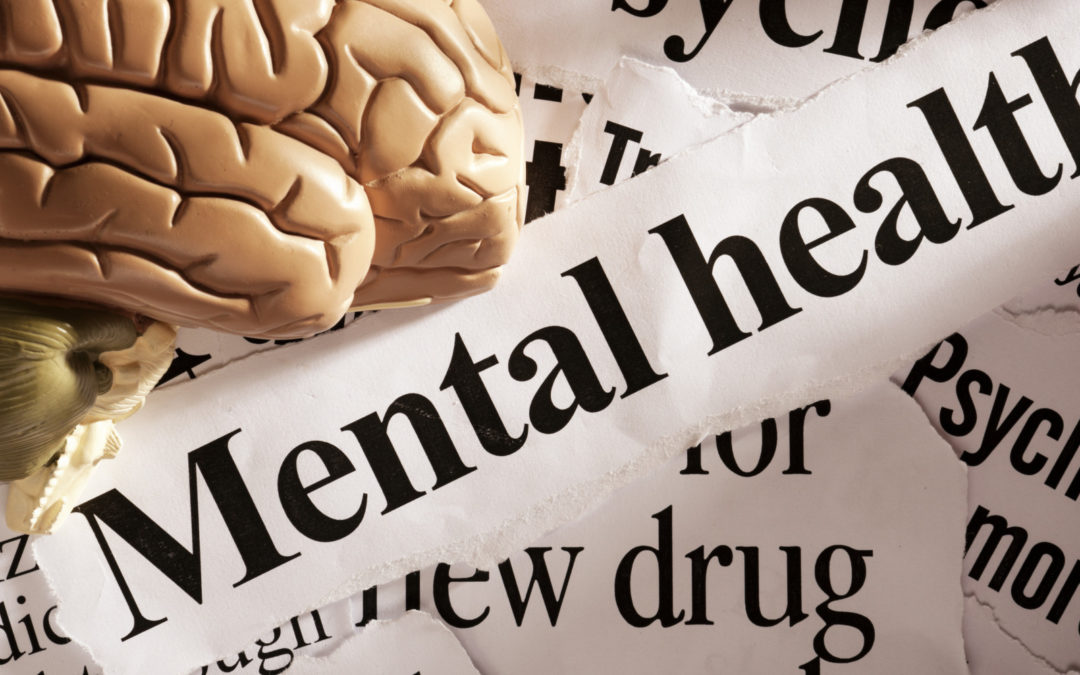
Healthy Habits & Lifestyle
We’ve repeatedly heard that what we eat is crucial to our well-being. Yet, despite the best advice, the foods that enliven one person’s day can leave someone else feeling sick. It’s a reminder that nutrition is far from a “one-size-fits-all” concept. Our bodies are as unique as our personalities, responding differently to various diets.
Just as the nursery rhyme goes, Jack Sprat could eat no fat while his wife could eat no lean—a dynamic that might sound familiar to many. My partner thrives on a ketogenic diet, rich in healthy fats, moderate proteins, and low in carbs. In contrast, my body prefers a friendlier relationship with carbohydrates and tends to rebel against too much red meat. It’s important to recognize that even without food allergies, certain foods (yes, even “healthy” ones) might not suit our digestive systems, leading to discomforts such as bloating or nausea.
The evidence suggests that some foods, known for causing internal inflammation, can worsen conditions like asthma or arthritis. Reducing or cutting out these foods can help anyone looking to keep a balance in their body’s systems. In contrast, foods that combat inflammation can be universally nurturing.

Inflammation’s Impact on Health and Ability to Heal
‘Inflammation’ often conjures images of a swollen ankle or reddened, healing skin. Yet, it also reflects a more profound, sometimes silent, process within our bodies. Often lurking in the foods we eat, inflammation can be the silent enemy that compromises our health. Understanding the impact of inflammatory foods is critical for those striving toward a healthier lifestyle.
Consuming a diet rich in inflammatory foods can disrupt the natural healing process. Chronic inflammation can weaken immune system responses and delay recovery from injuries. Additionally, scientists have linked inflammation to a variety of diseases, including heart disease, diabetes, and certain types of cancer.
Weight Gain and Obesity
The relationship between diet-induced inflammation and weight gain is complex but critical. Foods that promote inflammation can disrupt the balance of gut bacteria and hormone levels and lead to insulin resistance—all factors that may contribute to weight gain and difficulty in losing weight. Addressing dietary inflammation may be a key strategy in managing and reducing obesity.

The Impact of Inflammation on Mood and Mental Health
Have you ever felt foggy or fatigued after a meal? The brain is extremely sensitive to dietary influences. People consuming diets high in inflammatory foods have an increased risk of depression and anxiety. Furthermore, there is growing evidence to suggest that consuming anti-inflammatory foods could improve mood and alleviate symptoms of certain mental health conditions.
Autoimmune Disorders
Autoimmune disorders, such as eczema, rheumatoid arthritis, and lupus, are characterized by the immune system mistakenly attacking the body. Inflammatory foods can worsen these conditions, leading to more discomfort and flare-ups. On the other hand, incorporating anti-inflammatory foods into one’s diet may help manage and reduce the severity of symptoms.

What are Some Signs of Internal Inflammation?
Inflammation likes to operate under the radar. Here are some hints that it might be working its mischief within you:
- Persistent Fatigue: Feeling tired is normal after strenuous activity, but ongoing, unexplained fatigue might signal an inflammatory response.
- Gastrointestinal Issues: Frequent bouts of diarrhea, constipation, or bloating can indicate inflammatory conditions of the digestive system, such as Crohn’s disease or ulcerative colitis.
- Excessive Mucus Production: Chronic inflammation can increase mucus production, particularly in respiratory conditions such as asthma and chronic sinusitis. You may also see mucus in your stool and sputum when you cough.
- Skin Problems: Certain skin conditions, such as psoriasis and eczema, have been linked to inflammation within the body. Chronic skin inflammation can also be an indicator of underlying autoimmune disorders.
- Joint Pain and Stiffness: Joint inflammation can cause pain, stiffness, and swelling, particularly in conditions like rheumatoid arthritis. Chronic inflammation often targets the joints, leading to pain, stiffness, or swelling that isn’t caused by a specific injury.
- Skin Problems: Conditions like eczema, psoriasis, and other chronic skin issues can indicate underlying inflammation within the body.

What Foods Cause Inflammation?
The culprits behind dietary-induced inflammation might be sitting quietly in your pantry or fridge. While we’ve outlined broad categories of inflammatory foods, remember that individuals might respond differently.
- Processed and Red Meats: High in saturated fats, processed meats like hot dogs, sausages, and bacon, as well as red meats such as beef, have been associated with increased inflammation markers in the body.
- Refined Carbohydrates: Foods made from refined flour, such as white bread, pastries, and many snack foods, can elevate blood sugar levels rapidly, leading to inflammation.
- Fried and Fast Foods: Not only are these foods typically high in unhealthy fats but frying also introduces advanced glycation end products (AGEs), compounds that can stimulate inflammation.
- Sugar-Sweetened Beverages: Soft drinks, fruit drinks, and other sweetened beverages are high in fructose and other forms of added sugar, contributing to insulin resistance and inflammation.
- Trans Fats: Although increasingly being removed from food products, trans fats found in margarine, fast food, and commercial baked goods can provoke inflammatory responses.
- Artificial Additives: Some artificial colours, flavours, and preservatives in processed foods may trigger inflammatory reactions in some individuals, particularly those with food sensitivities or allergies.

Nourishing Alternatives to Include
On the flip side, focusing on whole foods that support a balanced and vibrant body is essential. However, the hero in one person’s meal may be the inadvertent villain in another. Understanding your body’s unique reactions to foods, embracing intuitive eating, and prioritizing gut health are not just nods to modern wellness trends but imperatives for anyone looking to combat inflammation’s silent siege. Try eating:
- Leafy Greens: Spinach, kale, and Swiss chard have essential vitamins, minerals, and fibres. They support a healthy digestive system and are low in calories. Salads are your friend if you’re like me, but wilted or steamed greens sit better in the belly if you’re like my partner.
- Healthy Fats: Nuts, seeds, avocados, olive oil, and fish rich in Omega-3 fatty acids, such as salmon and mackerel, have healthy fats, which are essential for hormone production and nutrient absorption.
- Whole Grains: Swap your white bread and regular pasta with whole-grain alternatives. Whole grains are rich in fibre and can help regulate blood sugar levels.
- Fruits and Berries: Fruits are nature’s candy. They’re rich in fibre, antioxidants, and vitamins. Choose fresh or frozen varieties without added sugars.
- Lean Proteins: Incorporating lean proteins, like chicken, turkey, fish, and plant-based proteins, such as lentils and chickpeas, can build muscles and keep you full longer.

Strategies for Avoiding Inflammatory Foods Amidst a Hectic Lifestyle
For busy professionals, parents juggling responsibilities, or students managing coursework and jobs, the key to good nutrition often lies in simplicity and planning. Healthy eating doesn’t have to be a complicated affair.
- Meal Prep: Dedicate a part of your weekend to preparing meals for the week ahead. A couple of hours spent cooking can save you a multitude of time during the week.
- Snack Smart: Keep handy snacks like carrot sticks, almonds, or Greek yogurt within reach for those mid-day hunger pangs.
- Hydrate Healthily: Replace sugary beverages with water infused with fruits or herbs for a refreshing pick-me-up.
Remember
While there are categorical suggestions on what to avoid and what to consume, the most valuable lesson is listening to your body. It’s about finding harmony within and ensuring your dietary choices align with your body’s needs and goals. Integrating the principle of nutritional individuality into our diets means paying close attention to how we feel after meals. Does lentil soup leave you feeling energized or unexpectedly stodgy? Do raw vegetables soothe you or seem to dial up digestive despair? It boils down to inflammation—knowing, understanding, and mastering the subtler tongue of your body’s internal dialogue.
Empower yourself with the knowledge, respect your body’s responses, and commit to your overall health by making informed decisions about your food. It’s a path worth taking for your well-being. Let food be your medicine, not just calories to count.
# Bonus Tip:
Don’t be afraid to experiment with new foods and dietary habits. Our bodies constantly evolve, and what might have worked for us in the past may no longer suit our current needs. Be open-minded and curious about food, and don’t hesitate to adjust your diet as needed. Working with a Holistic Nutritionist can get you started with meal plans that suit your taste, lifestyle and dietary needs.
Disclaimer
The content on the Newleaf Total Wellness Centre blog, including insights on various holistic health practices, serves purely educational purposes. Before adopting any new health regimen, including treatments or herbal remedies mentioned here, consult with a healthcare professional to ensure it’s suitable for you. Our blog does not substitute for professional medical advice, diagnosis, or treatment. We encourage meaningful discussions with your healthcare provider to secure the best care for your well-being.
Written By: DeVera Nybo, MBA, Owner, Newleaf Total Wellness Centre.

Pain Relief and Physical Health
In your wellness journey, you may have encountered the bewildering phenomenon of referred pain, which manifests in areas distant from its source. It’s a complex puzzle, isn’t it? Yet, for those with chronic conditions, recovering from trauma, or navigating injuries, understanding this concept is a pivotal move towards empowerment and regaining control over your well-being.
The Pathways of Pain
It might surprise you to learn that some referred pain travels along specific nerve pathways. This means you may feel discomfort originating in one organ or place of the body entirely in another area. It’s a curious phenomenon in which the nervous system sends mixed signals about the location of the soreness, making it difficult for our brain to pinpoint the distress. Our bodies have a delicate network of nerves threaded throughout. Sometimes, the signals get crossed. Because of its deceptive nature, referred pain can be challenging to diagnose and treat, but understanding its principles is the first step toward managing it more effectively.

Patterns and Recognition
Not all referred pain is random; there are identifiable patterns. For instance, arm discomfort may signal heart complications. At the same time, aching in your shoulder blade might indicate issues with internal organs like the gallbladder or liver. In contrast, a throbbing knee may indicate low back issues, while headaches might originate in the cervical spine. As explained in “PMC,” these patterns act as guides, giving clues to uncover the main issue rather than providing a conclusive diagnosis. Therefore, it is advisable to seek advice from healthcare experts skilled at diagnosing and treating musculoskeletal expressions of pain.
Fascia: The Hidden Culprit
Beyond nerve pathways lies a lesser-known player in the pain game called the fascia. This web-like connective tissue envelops our muscles and organs. When strained, the aching can be mysterious, seemingly untraceable, and often mistaken for other ailments.
Understanding the role of fascia in pain perception highlights the need for a comprehensive approach to treatment that looks at the whole picture rather than isolated symptoms.

The Role of the Brain
Many people are surprised to learn that referred pain is not a result of the body’s physical structures but a product of the brain. Various factors, like our previous experiences, emotional state, and even cultural beliefs, influence this “pain map” within our brain.
Additionally, pain is not so much a sensation as a sophisticated perception forged in your mind. Consider this enlightening truth: physical suffering is often fully driven by the brain, making it a deeply subjective experience influenced by physical factors, memories, emotions, and even sensory triggers such as smells.
Influences That Shape How We Perceive Pain
Here lies the most profound revelation in our exploration of pain perception—we are not passive recipients of this sensation. Our past experiences, the stories we’ve heard, and the environment around us all shape how intensely we feel pain.
Remember a time when a familiar aroma alleviated some discomfort without any medication? That’s not magic; your neural network responds to positive associations. Similarly, stress can amplify our suffering, while tranquillity might diminish it. Thus, managing our environment and emotions is a major ally in our search for relief.

Cognitive Behavioral Therapy: Empowering Pain Management
Cognitive behavioural therapy (CBT) is an evidence-based psychological intervention that promotes self-awareness, emotional balance, and adaptive coping strategies. Researchers have widely documented the effectiveness of CBT for pain management. Studies consistently show its effectiveness in reducing symptoms and improving the overall quality of life for individuals suffering from chronic pain. Working with a psychotherapist or other counsellor may help patients understand and cope with their pain.
Articulating the Pain Experience
Your experiences are valid! The trick is translating them accurately to a healthcare professional so they can actually help you. Clear communication is crucial. When describing your condition, be as specific as possible. Describe the location, type of pain (sharp, dull, throbbing), frequency, intensity, and any activities that worsen or lessen it. This detailed portrait of your soreness assists professionals in piecing together a more accurate diagnosis. While filling out all those intake forms and repeatedly telling your story is tedious, they are essential to your patient history. The more information you can provide, the quicker your practitioner can solve the mystery of your pain.

Tailoring Treatments for Maximum Effectiveness
A one-size-fits-all approach to managing pain falls short of addressing each individual’s unique needs. Efficient management often requires a multidisciplinary team that includes practitioners with specialized training, physical therapy, acupuncture, visceral manipulation, nutrition, and psychotherapy to design personalized treatment plans. This holistic strategy ensures the improvement of symptoms. It aims to tackle the root cause of the discomfort, paving the way for sustainable recovery and wellness.
The Way Forward
In light of these insights, we extend you a beacon of hope: Manage your lifestyle. Seek professional guidance attuned to your physical symptoms and you as a complex and unique individual.
Keep this your mantra: patience and persistence are your trusted companions on this healing voyage. And remember, when it comes to conquering referred pain, understanding is half the battle won.
Stay empowered, well-informed, and positive as you break through the barriers of chronic pain and rediscover the joys of a vibrant, balanced life.
Your pain is real, but so is hope. With this affirmative note, we encourage you to act. After all, your wellness story is incomplete, and the next chapter is in your hands.

Conclusion
At Newleaf Total Wellness Centre, we understand the complexity of referred pain and its impact on our patients. We strive to help people heal from injuries, trauma, and illness to achieve optimal wellness through a holistic approach that prioritizes education, collaboration, and individualized treatment plans. With our team of dedicated professionals and a range of specialized services, we are committed to helping our patients find long-term relief and improve their overall quality of life. Don’t let referred pain hold you back – let Newleaf Total Wellness Centre help you on your journey towards a pain-free life. Book an appointment to discuss your unique needs.
Written by DeVera Nybo, MBA, Owner, Newleaf Total Wellness Centre
Disclaimer
This document is for informational purposes and is not a substitute for professional medical advice, diagnosis, or treatment. Always seek the advice of your physician or another qualified healthcare provider with any questions you may have regarding a medical condition, including pain.
References:
International Association for the Study of Pain (IASP). (n.d.). Referred Pain. Retrieved from https://www.iasp-pain.org/terminology?navItemNumber=576#Referredpain
PMC. (2015). Understanding the referred pain experience, Journal of Physical Therapy Science, 27(2), 555-556. doi:10.1589/jpts.27.555
Cognitive Behavioural Therapy for Chronic Pain. (2021). Retrieved from https://www.nhs.uk/conditions/cognitive-behavioural-therapy-cbt/treatment-for-pain/
National Center for Complementary and Integrative Health. (2019). Acupuncture: In Depth. Retrieved from https://www.nccih.nih.gov/health/acupuncture-in-depth
Visceral Manipulation Institute. (n.d.). What is Visceral Manipulation? Retrieved from https://www.barralinstitute.com/therapies/index.php
Heartland Health Research Institute. (2019). Manual Osteopathy: Holistic Approach for Pain Relief and More. Retrieved from http://heartlandhealthresearchinstitute.com/manual-osteopathy-holistic-approach-for-pain-relief-and-more/

Women's and Children's Health
Fertility can be a complex and deeply personal matter for many women. While the road to conception can be straightforward for some, others may face a labyrinth of challenges. For those seeking alternative pathways to pregnancy, holistic fertility treatments offer hope. They advocate for a gentle and natural approach to this intimate voyage. The quest for motherhood is as old as humanity, yet it remains one of modern society’s most pressing concerns. The ability to conceive, often taken for granted, can be an elusive dream for many women. Amidst this landscape, holistic treatments are becoming beacons of light, pointing toward a more natural and integrative way to nurture fertility. Here, we will explore the potential of holistic interventions and how they might assist those on their conception journeys.
Understanding Holistic Fertility Treatments
Holistic fertility treatments stand apart from conventional methods through their emphasis on treating the whole person. This philosophy looks beyond traditional practices and may be an excellent addition to hormonal injections and IVF. Focusing on natural remedies and lifestyle alterations catering to physical, emotional, and spiritual health empowers women to participate actively in their fertility journey.

Acupuncture and Fertility
Acupuncture is a time-honoured foundation of traditional Chinese medicine. It has emerged as a celebrated modality in Western healing practices, particularly for its promising role in enhancing fertility. This ancient technique stimulates precise meridians within the body to re-establish equilibrium and promote the natural flow of energy. Scientific studies lend credence to its efficacy. They reveal that acupuncture can increase fertility rates by improving blood flow to reproductive organs, balancing hormone levels, and reducing stress. By integrating this practice, numerous individuals have reported a marked improvement in their reproductive health
This presents an exciting opportunity for individuals seeking to optimize their chances of conception. It also underscores the importance of a holistic approach to reproductive health. As we continue to unravel the mysteries of acupuncture, its place in modern fertility treatments will undoubtedly become more widely recognized. This time-honoured tradition has immense value in enhancing general health, providing optimism and viable options for those facing difficulties with conceiving.

Herbal Medicine’s Role in Conception
Throughout the ages, herbal medicine has been interwoven with our ancestors’ quest for wellness. It offers natural remedies to various conditions, including the delicate process of enhancing fertility. Research has highlighted the encouraging potential of plants like vitex, commonly called chasteberry, for their possible impact on regulating hormones and improving ovulation. Alternative Medicine practitioners believe that red clover, with its phytoestrogenic properties, offers a supportive boost to reproductive health. Furthermore, they celebrate the understated evening primrose oil, rich in omega-6 fatty acids, for promoting cervical mucus quality, thereby facilitating the ideal conditions for conception.
Aligned with empirical wisdom, modern research scrutinizes these claims, striving to quantify their efficacy with scientific rigour. While statistics and conclusive evidence are growing, they require more exploration to endorse these herbs as mainstays in reproductive support.
Amidst this hopeful narrative, a note of caution to consult with all healthcare professionals administering care before integrating herbal remedies into your daily regimen. A Traditional Chinese Medicine practitioner, like Xinling Leng, will understand how herbal remedies interact. Bring your family physician or pharmacist into the loop before committing to herbal medicines to guard against interactions with Western medication. Doing so is a fundamental step that champions safety and personalizes care. Such consultations ensure that potential interactions with present medicines or treatments are carefully considered, honouring your health’s unique tapestry. This partnership between you and your healthcare providers is paramount, underpinning a wellness journey rooted in understanding and respecting ancient remedies and contemporary medical insights.

Diet and Fertility
Our food choices are vitally important for our overall health and reproductive potential. Nourishing your body with a diet abundant in antioxidants, like vitamins E and C found in fruits and vegetables, can protect your cells from damage and support your body’s natural reproductive processes. Lean proteins, such as fish and poultry, offer essential amino acids without the added burden of saturated fats, promoting optimal hormonal balance. Healthy fats, including those from avocados and olive oil, play a crucial role in developing healthy eggs and sperm. Whole grains, rich in fibre, can help regulate blood sugar levels, which are critical for maintaining hormonal equilibrium.
Research suggests that women who follow a diet high in these components experience an increased likelihood of conception. Emerging studies illuminate the profound impact diet can have on fertility. For instance, research published in “The American Journal of Obstetrics and Gynecology” highlights that woman who followed a diet rich in healthy fats, whole grains, and plant-based proteins improved their ovulatory function. Conversely, those who consumed higher levels of trans fats, refined carbohydrates, and animal proteins experienced diminished fertility.
We understand that the path to conception is profoundly personal and sometimes challenging. By providing your body with these vital nutrients and building blocks, you’re taking a proactive step towards creating a welcoming environment for new life and taking control of your health. With a balanced and nourishing diet, you can make positive changes in your reproductive health and support the journey towards growing your family.
Remember that every person’s body is unique, so working with a healthcare professional to find the best dietary plan for your needs and goals is essential. Holistic nutritionists, such as Lindsey Shields, specialize in crafting fertility-boosting dietary plans that consider the singularity of your needs. While the nutritional insights offered here lay a solid groundwork for aspiring parents, a hands-on approach by a professional like Shields, who conducts extensive personal assessments, is indispensable.

Reducing Stress, Boosting Fertility
Stress can significantly affect your health, and this is especially true when it comes to fertility. Studies have found that reducing stress can dramatically increase women’s chances of becoming pregnant, with some research showing as much as a 30% improvement. By bringing calming practices such as meditation and yoga into your life, you can create a more peaceful, balanced state of mind and body that may lead to better fertility outcomes.
However, there are other, perhaps less familiar, ways to manage stress that can also be incredibly effective. Working with a hypnotherapist like Ashlee Bennett might open new doors on your wellness path. This type of therapy can help you discover and change deep patterns of thinking that contribute to your stress, reshaping how your mind works positively. This could be especially helpful for those dealing with anxiety related to infertility.
Similarly, consulting with psychotherapists such as Hedy Anvari allows you to engage in meaningful conversations that provide custom solutions for your mental well-being. Studies show stress and anxiety can reduce fertility. A psychotherapist will guide you through complex emotions and equip you with specialized strategies to overcome stress and anxiety. These experts support you with scientific knowledge and emotional understanding, giving you renewed optimism and strength on your journey toward becoming a parent.

Exercise and Sleep: Unsung Heroes of Reproductive Health
Understanding and nurturing our bodies through regular but gentle exercise and ensuring sufficient, restful sleep is fundamental to our health and deeply connected to fertility. Moderate, low-impact activities such as brisk walking, yoga, or swimming soothe and energize our bodies. But did you know that moderate exercise enhances blood flow, creating a nurturing environment for reproductive health. Studies suggest that women who engage in regular, moderate exercise may experience a 5-20% increase in fertility rates.
Quality sleep, often underestimated, is a pillar of our health, crucially rebooting both body and mind. During these restful hours, our bodies can repair and balance hormones pivotal to conception. Adequate sleep, defined as 7-9 uninterrupted hours per night, has been linked to a balance in the hormones governing ovulation. Getting enough quality sleep enhances the chances of a successful pregnancy.
Both moderate exercise and quality sleep are beneficial habits as they acknowledge and respect our body’s needs. They offer physiological support and a source of empowerment and control in our wellness journeys, reminding us that our daily choices are deeply interconnected with the miracle of conception.
Conclusion
Holistic fertility treatments invite us to rethink the path to pregnancy. They are a testament to the notion that conception is a dance of harmony within our bodies. Women trying to conceive may find solace and success in these natural practices.
We encourage you to open your heart and mind to holistic fertility. Whether it’s acupuncture, a diet tweak, or a new stress-reduction practice, every step toward a natural pregnancy is a stride toward hope.
—
To all the strong women on this path, remember that your story is unique, and so, too, will be your road to motherhood. Keep hope and health at the heart of your quest, and may your pregnancy dreams come to fruition.
Written by DeVera Nybo, MBA, Owner of Newleaf Total Wellness Centre

Healthy Habits & Lifestyle
The Seven Pillars of Total Wellness: A Holistic Approach to Your Well-Being
In the bustling rhythm of modern life, we often focus on one aspect of health while neglecting others. Wellness is frequently mentioned in passing as if it’s a state we stumble upon rather than something we can cultivate. Yet, total wellness requires a holistic approach that intertwines various facets of our existence. Today, we explore the Seven Pillars of Total Wellness—a framework that empowers you to attain harmony and vitality in every part of your life.
Understanding and nurturing each pillar is critical to a balanced lifestyle that radiates positivity, productivity, and peace. If you’re committed to thriving, not just surviving, join us in this enlightening exploration toward total wellness. And remember, if you need support in building these pillars in your life, Newleaf Total Wellness Centre is here with a team of over 20 therapists across 13 disciplines, ready to guide you to your personalized version of complete health and satisfaction.

Financial Wellness: The Foundation of Stability 💰
Financial health isn’t about amassing wealth but finding balance in your financial life that brings peace of mind and security. It’s about creating a budget that reflects your values, saving for emergencies, investing wisely, and planning for retirement. A balanced budget allows you the freedom to enjoy life without monetary stress or worry. Financial strain can tremendously impact other aspects of well-being, so being prudent with your resources is vital.
- Budgeting: Start by tracking your spending and setting realistic budgets.
- Saving: Aim to build an emergency fund that covers several months of expenses.
- Investing: Educate yourself on investment options and seek advice when necessary.

Mental Wellness: The Cradle of Creativity 🧠
Elevate your intellectual health by nurturing your mind. Challenges keep your brain sharp, so never shy away from learning new skills, reading broadly, or engaging in thought-provoking conversations. Your mental pillar is vital; it supports your creativity, decision-making, and lifelong pursuit of learning. The intellect’s flexibility forms your resilience against life’s unending changes.
Mental well-being is linked to the overall condition of a person’s mental state, which encompasses logical thought processes, sound judgment, and the ability to handle challenging circumstances. It relates to how we think, learn, and grow intellectually. A positive mindset enhances our clarity, decision-making, and productivity.
- Continuous Learning: Engage in activities that challenge your intellect, such as reading, solving puzzles, taking a course, or learning a new skill.
- Positive Thinking: Practice mindfulness and gratitude to cultivate a positive mindset.
- Seek Professional Help: Mental health issues may lead individuals to act out or engage in risky activities. Medical interventions, including counselling and medication, may be necessary to regain mental health.

Physical Wellness: The Essence of Energy 💪
Physical fitness is the force that fuels your wellness structure. Our bodies are our temples, and how we treat them can significantly impact our overall well-being. Physical wellness is maintaining a healthy body through regular exercise, proper nutrition, and adequate sleep. This pillar is more than achieving peak performance or sculpting an ideal physique. A physically healthy person is more robust, energetic, and equipped to handle life’s challenges.
- Nutrition: Eat a balanced diet rich in whole foods, lean proteins, and fresh produce.
- Exercise: You don’t have to spend hours in the gym. Get outside. Go for a walk. Take the stairs or park further from the entrance.
- Seek Professional Help: Use your workplace health insurance plan to see a physiotherapist, kinesiologist or athletic therapist for a functional movement assessment and exercise prescription to help you meet your goals.

Emotional Wellness: The Heart of Connection ❤️
The emotional wellness pillar asks for self-compassion and deep, meaningful relationships. It involves understanding your feelings, expressing emotions in healthy ways, and developing empathy towards others. Emotional health allows us to cope with life’s stressors, build and maintain relationships, and recover from emotional setbacks.
Emotional well-being involves the capacity to control and balance various emotional states. This includes effectively managing reactions to stress, anger, sorrow, and happiness to maintain healthy relationships. When it comes to emotional wellness, an individual’s actions are often more influenced by their emotional state rather than a definitive mental illness. Struggling to regulate one’s feelings is frequently a telltale symptom of emotional turmoil.
- Relationship-Building: Nurture your emotional connections with open communication and empathy.
- Identify Triggers: Get help to understand, name, and control your emotional triggers. This can help you lead a happier and healthier life.
- Self-Care: Take time to engage in activities that soothe and rejuvenate you emotionally.

Spiritual Wellness: The Search for Meaning 🙏
Spiritual wellness can mean different things to different people. For some, it might be a traditional religious practice; for others, it could mean a personal connection to nature or the arts. This pillar involves finding meaning and purpose in life, which imparts a sense of fulfillment and can help steer one through rough waters. It empowers you to align actions with your innermost values, leading to a life infused with intention.
- Purpose: Volunteer for causes you believe in to connect with your sense of purpose.
- Reflection: Allocate time for meditation, prayer, or quiet contemplation.
- Define Your Values: Understanding your values sends a clear message about who you are, what you believe in, and what you stand for. It’s a compass to guide your decisions and actions.

Social Wellness: The Hub of Harmony 🤝
Humans are social beings, and our relationships can profoundly impact our overall well-being. Social wellness is the pillar that encourages building healthy, nurturing, supportive relationships and fostering genuine connections with those around you. Finding community and a sense of belonging contribute to social wellness. It’s not about the number of friends or followers – it’s the quality of connections that count. The sense of belonging, rather than fitting in, and our contributions to society fortify this crucial component of our well-being.
- Community Engagement: Participate in community events, clubs, or online forums to meet like-minded individuals.
- Support System: Cultivate relationships that provide mutual support and growth.
- Be Yourself: Differentiate between belonging and fitting in. Fitting in forces us to squash parts of ourselves to be like everyone else in the group. Belonging demands we be ourselves with others.

Occupational Wellness: The Pursuit of Career Satisfaction 💼
Lastly, the occupational pillar is about finding gratification and fulfillment in your work. Look for a career that allows you to contribute your unique talents and passions while providing a sense of accomplishment and meaning. This pillar is a testament to the fulfillment of contributing your unique skills to a greater calling.
- Work-Life Balance: Establish clear boundaries between work and personal time.
- Career Growth: Set career goals and seek opportunities for professional development.
- Alignment: Choose work that aligns with your values and skills to give you a sense of balance, pride and accomplishment.
In Summary
Each pillar of total wellness is indispensable, and nurturing all of them leads to a more balanced, joyful, and fulfilling life. From financial security to spiritual depth, every aspect contributes to a healthier, happier you. Balancing these seven pillars will not happen overnight. It requires introspection, commitment, and sometimes change, which can be challenging but also rewarding.
Remember, you do not need to take this wellness journey alone. If you need assistance strengthening any of these pillars, Newleaf Total Wellness Centre is your ally. With our diverse range of therapies and skilled professionals, we can help you achieve your version of total wellness. Please contact us, and together, we’ll make sure to build the pillars that uphold the radiant temple of your well-being.
Your best life is waiting. Step forward, reach out, and seize it with both hands.
Written By: DeVera Nybo, MBA, Owner of Newleaf Total Wellness Centre

Mental Health and Emotional Wellness
Are you trying to push past the pain hidden in the shadows of your past trauma or current stress? Are you also struggling with physical pain? At Newleaf Total Wellness Centre, we understand that emotional turmoil doesn’t just leave scars on your mind; it entrenches itself deeply within your body. Psychological pain and physical pain often go hand-in-hand. In fact, up to 90% of women with fibromyalgia and a significant portion of arthritis patients report trauma at some stage in their lives ([How is Psychological Trauma Linked to Chronic Pain? – Pathways]).
This blog post is a must-read for everyone, from mental health advocates and holistic health seekers to PTSD survivors and those grappling with the ongoing challenge of daily stress.
A Journey Through the Body’s Emotional Landscape
Our bodies are living libraries of every experience we’ve endured. From the pain of a violent childhood to the sting of discrimination, emotions carve their histories into our muscular fibers and nervous system. Trapped emotions can lead to feelings of resentment, poor decision-making, and even physical illness. Our body remembers and holds onto these moments, manifesting as chronic stress, anxiety, and depression ([How to Release “Emotional Baggage” and the Tension That Goes With It]).

The Echo of Release: An Emotional Catharsis
Have you ever walked out of a physiotherapy, or acupuncture appointment with tears streaming down your face, and thought, “Wait a minute, I didn’t even feel a pinch!” We get it. Those tears aren’t from pain – they’re pathways to release pent-up emotions.
Your tears are a testament to the mind-body connection. They are a revelation that within every point on the body lies a locked door to emotional release. Once opened, they can usher in new beginnings and brighter days.
The Holistic Approach to Emotional Release
At Newleaf, we offer an assortment of treatments, including manual osteopathy, visceral manipulation, cranial sacral therapy, acupuncture, trigger point release, and myofascial release. These treatments help synchronize your emotional and physical well-being. Our therapists are experts in various techniques and compassionate guides who walk with you through the terrains of emotional wellness.

The Power of Manual Therapies in Emotional Healing
When you’re pushing through the hustle and bustle of life, emotions tend to take a back seat. But with the gentle touch of a skilled therapist, these emotions find a way to the surface. Crying during or after treatment is more than okay—it’s a healing sign. Remember, the physical and emotional are intertwined. Just like two harmonious notes in a soothing melody, they work better together. And that emotional outpouring is harmony in the making.
Our treatments may coax out the shadow of emotions hidden deep within your tissues, liberating them, and allowing your body to reclaim the joy of living free from the chains of past traumas.
In the grand scheme of things, your surprising post-treatment tears are GOOD NEWS. They herald the coming of balance, the approaching of better health, and the promise of well-being.

Counselling: Healing Beyond the Surface
Imagine a world where your journey to healing is not just about mending the visible wounds but a path that delves deep into the recesses of your mind and spirit. Welcome to a space where counselling meets holistic care, transforming lives beyond the surface.
We believe that true wellness blossoms from a blend of physical and mental care. Our comprehensive approach to health transcends traditional practices, venturing into the vast landscape of the human psyche. Here, we hear every story, acknowledge every emotion, and empower every individual.
We are your allies in the odyssey of self-discovery and recovery. You may choose between psychotherapy’s insightful exploration, hypnotherapy’s profound subconscious journeys, or transformational life coaching’s empowering strides, or sample them all. At Newleaf Total Wellness Centre, we cater to every need.
The Guiding Light of Accredited Knowledge
Our treatments are informed by knowledge and skill recognized and regulated for your safety and trust. The Canadian Counselling & Psychotherapy Association (CCPA), The College of Physical Therapists of BC (CPTBC), The College of Traditional Chinese Medicine & Acupuncture (CTCMA) and the College of Registered Manual Osteopaths stand as beacons in their respective fields, ensuring professional care that resonates with the rhythm of healing.

Begin Your Healing Odyssey
It’s time to unburden yourself from the weight of trapped emotions. It’s time to realize that your tears are markers of progress on a quest to rediscover balance and vitality. Check out the services offered at Newleaf Total Wellness Centre and forge a path of healing that harmonizes body, mind, and spirit. We’re not just treating symptoms. We’re nurturing wholesome, enduring wellness for a Stronger, Braver, Better you.
Remember, every step, treatment, and release are a movement towards an emotionally resilient you. Reclaim the wellness that awaits at Newleaf Total Wellness Centre.
Embrace the holistic way. Nurture your wellness. Unleash your potential.
Written By: DeVera Nybo, MBA, Owner Newleaf Total Wellness Centre

Therapy Options Explained
Understanding Manual Osteopathy
Manual osteopathy is a patient-centred system of healthcare that uses hands-on techniques to balance all body systems. They focus on making sure your bones, muscles, and other parts work well together. Unlike regular doctors who might only treat one problem at a time, osteopathy looks at how all parts of your body are connected. The goal is to improve your overall health by treating you as a whole person. This approach believes keeping your body, mind, and spirit in balance is important for good health. Unlike conventional medicine, which often isolates and treats symptoms independently, manual osteopathy considers the position and health of all body tissues, including the organs, as linked.
How Our Feelings Affect Our Bodies
It’s well-known that what we feel emotionally can change our physical health. Stress, anxiety, grief, and other emotions don’t just affect our minds. They can show up in our physical health, leading to muscle tension, hormonal imbalances, and, yes—even the displacement of organs. The concept might seem far-fetched, but think of that “knot” in your stomach during moments of fear or the feeling of your heart being “heavy” with sorrow. Our body will often mirror our emotional state.

Gagandeep Watts, MO
Visceral Manipulation in Osteopathy
Osteopaths have a particular way of treating the body called visceral manipulation. They gently move and fix restrictions in the organs and tissues around them. This gentle manual therapy carefully works with the internal organs (viscera) and their connective tissues to free up restrictions and improve the organs’ ability to function effectively. By doing so, manual osteopaths help restore balance and ensure that each organ sits correctly within the body. This therapy mitigates discomforts that might stem from displacement due to emotional stress.
Working With Other Health Care Professionals
Osteopaths also think about the mental causes of physical problems. By understanding how the mind and body connect, osteopaths can help people heal more completely. Treatment plans might include working alongside psychologists or counsellors when necessary, proving the power of interdisciplinary cooperation in achieving well-being.
Manual osteopathy offers significant benefits but shines exceptionally bright when complementing other treatments. It can fill gaps that regular medicine might miss and help patients who haven’t gotten better with other treatments.

The Healing Environment of Osteopathy
An osteopath’s office is a sanctuary where people can get help for their emotional and physical pain. It can be a source of comfort for those who are suffering inside and show them a way to get better. Individuals who live in the aftermath of emotional upheavals and carry the invisible weight of their feelings can find comfort and relief through the hands of a skilled manual osteopath. Relief is achievable and expected through the thorough and compassionate application of manual osteopathy techniques.
Final Thoughts
Feelings are powerful and can affect our bodies and minds. Whether you are burdened by physical discomfort or emotional strain, seeking the expertise of a manual osteopath might open doors to a level of wellness previously impossible.
As we move towards a future where holistic and conventional medicine collaborate more closely, the role of manual osteopathy will undoubtedly become even more meaningful. It carries the potential to heal and teach us about something we often forget. Our bodies and minds are inseparable, and caring for one means nurturing the other.
To book a free 15-minute consultation with Gagandeep Watts, MO, click here.
Written By: DeVera Nybo, MBA, CEO/Owner Newleaf Total Wellness Centre

Therapy Options Explained
As the owner of Newleaf Total Wellness Centre in Abbotsford, I am often asked if hypnosis can really be considered therapy. The answer is a resounding YES! Hypnotherapy is a holistic approach to treating many physical and mental health conditions. Initially, the idea of hypnotherapy seems mysterious and, to some extent, intimidating. However, it is a well-respected albeit unregulated therapy practiced by certified professionals. While the use of hypnosis by certified hypnotherapists has gained greater acceptance in mainstream healthcare, one must understand that hypnotherapy is not a one-size-fits-all technique. People have different personalities, temperaments, and emotional regulation, which affect the success of hypnotherapy. This article will explain hypnotherapy and what happens during a session to help you make an informed choice for your therapeutic needs.
What is Hypnotherapy?
Hypnotherapy is a type of talk therapy that involves entering an alpha/theta brain wave state, which occurs naturally during sleep. Its purpose is to make lasting positive changes in your thoughts, emotions, and behaviours. By combining talk therapy with therapeutic hypnosis, hypnotherapy creates a safe and supportive environment to bridge the gap between conscious intentions and subconscious motivations. You can begin to align your thoughts and actions with your desired outcome. Typically, each hypnotherapy session lasts around an hour, and patients often see noticeable improvements within two to ten sessions. However, the required sessions can vary depending on individual needs and goals.

How hypnotherapy works
What can Hypnotherapy Treat?
Hypnotherapy has been extensively researched and is proven to help individuals manage stress, anxiety, irritable bowel syndrome, PTSD, and the behavioural issues experienced by children with autism. Hypnosis also provides a practical solution for pain management without any side effects, which is especially important in light of the growing concerns around opioid addiction.
In addition to pain control and behaviour change, hypnotherapy holds promise in addressing mental health conditions, treating asthma and alleviating the side effects of cancer treatment. This versatile approach extends to breaking free from the fight, flight or freeze response.
However, it is important to note that hypnotherapy may not be suitable for people with severe mental health issues or those under the influence of drugs or alcohol. Furthermore, experts advise against using hypnosis for memory retrieval. Remembering the past is essentially a form of storytelling, as our memories depend on the last story we tell ourselves. Consequently, individuals hoping to recall childhood events should be cautious of creating false memories through hypnotherapy.
How does it Work?
By accessing the power of your subconscious mind, hypnotherapy allows you to rewrite the code of your mental programming. The conscious mind only controls a small portion of your overall well-being, while the subconscious accounts for a staggering 88%. Hypnotherapy helps reframe your subconscious mindset to align with your goals and dreams.

Hypnotherapy session
What happens in a session?
Stage One – Introductions and Goal Setting
During your first session, your hypnotherapist will get to know you, your reasons for seeking hypnotherapy, and your experience with therapy in general. They will ask about your medical and mental health history, the symptoms you are experiencing, any medications you are taking and your goals for therapy. This information is crucial for the hypnotherapist to create a customized plan for your treatment. Once your hypnotherapist has gathered initial information, they will explain how hypnotherapy works. They will describe the hypnosis process, what will happen during the session, how you may or may not feel, and what to expect after the session. It’s essential to ask all your questions now to ensure you feel fully informed, comfortable and relaxed before your session.
Stage Two – Hypnosis and Conversation
The hypnotherapist will lead you into a relaxed state, similar to meditation, by having you imagine yourself in a relaxing, peaceful place, allowing your mind to support your body in deep rest. With your eyes closed, you’ll remain fully alert as they guide you through the session. Focusing on your breath, you’ll release stress and tension, entering a state of deep relaxation.
Once you have achieved a hypnotic state, the therapist will guide you on a visual journey to release negativity and incorporate positive changes. Through heartfelt discussions between your protected self and these vulnerable aspects, some discover a transformative experience. The intention is to forge a new relationship within yourself, building a foundation for growth and healing guided by love and protection.
This process involves suggestions to replace unfavourable trance states with more desirable ones. The therapist may also help you reframe negative experiences or memories so that they are no longer a source of stress or anxiety. You may feel lightheaded, relaxed, or even fall asleep during the session. Some patients report being amazed by the intensity of the beautiful emotions they experience in this state. These experiences are normal and to be expected.
It’s important to remember that the hypnotherapist will never ask you to do anything outside of your comfort zone or beliefs, and you will be in complete control throughout the process. Many patients describe hypnosis as a state of deep relaxation and heightened awareness. If, at any point, you feel uncomfortable or wish to stop, you can simply open your eyes and speak with your hypnotherapist. Communicating any feelings that arise is crucial, as this is the only way your therapist can make adjustments for subsequent sessions.
Stage Three – Ending the Session
Before bringing you back to full awareness, the hypnotherapist will often offer positive suggestions and allow you to address any remaining concerns. Your consent is of utmost importance, and a good hypnotherapist will include the suggestion, “No one, including myself, will be able to hypnotize you without your consent.” After the session, you will slowly come out of the hypnotic state and may feel more relaxed, energized, or the same as before. The therapist will conclude the session by discussing your experiences and observations. Before you leave, the therapist may also provide you with activities to do that support ongoing self-love and growth or self-hypnosis techniques to try on your own. In any case, you must practice self-reflection and self-care after the session.
Conclusion
Hypnotherapy may serve as a powerful tool for enhancing well-being, alleviating anxiety, and transforming negative behavioural patterns. Nevertheless, certain patients may experience restlessness, anxiety, or difficulty reaching an alpha/theta state, which can impact the effectiveness of hypnotherapy. It’s important to note that successful therapy relies heavily on the rapport between the client and therapist, with rapport accounting for more than 70% of therapy’s efficacy. It is essential to consider all your therapy options and find a therapist whose personality and technique suit your specific needs.

Ashlee Bennett
Do you still have questions? Book a 15 minute FREE consultation with our Hypnotherapist, Ashlee by clicking HERE.
Written by: DeVera Nybo

Therapy Options Explained
By definition, a visceral manipulation massage is a slow and gentle process of massaging the viscera, or internal organs, to promote better function, reduce pain, and increase mobility. Sometimes internal organs, such as the kidneys and the stomach, will hold onto stress which can cause nerves to lock up.
When this happens, visceral manipulation brings natural movement through the organs and produces better blood flow to the viscera, resulting in overall better health.
What Kinds of Health Issues Can a Visceral Manipulation Massage Help Cure?
Digestive disorders are the most common ailments treated with visceral manipulation. Bloating, constipation, severe menstrual cramps, nausea, acid reflux, and esophageal issues sometimes require gentle massages in circular motions to bring movement and function back into your body.
These movements break up scar tissue, stimulate the fibers of visceral nerves, and prepare your body to better cope with health issues.
Other Health Ailments That Visceral Manipulation Could Help with Include:
- Sports injuries, such as whiplash, sprains, and sore muscles.
- Men’s health problems, such as swollen prostate, pelvic pain, and testicular pain.
- Women’s health issues, such as endometriosis, ovarian cysts, and menopausal symptoms.
- Post-operative scar tissue buildup.
- Pediatric problems, such as infant colic and painful constipation.
If you do not see your health issue mentioned here, you can contact Newleaf Wellness, one of the best osteopathic practices in Abbotsford, to learn more about how visceral manipulation massage could help alleviate your pain and restore the positive balance to your body.
Visceral Manipulation Massage Can Improve Your Mental Health as Well
Your mental health and physical health affect one another. When you feel bad about your body, your mental health will suffer. When you are coping with mental illnesses, such as anxiety and depression, your physical health becomes less important.
A visceral manipulation massage can help you restore focus and the connection between your body and mind. Stress comes from the mind but builds within your body, becoming trapped in your nerves and muscles. The act of slow, gentle strokes on your skin, muscles, and viscera provides a release of endorphins that allow your body to let go of stress and begin healing from the inside out.
The experts at Newleaf Wellness Center are well-versed in what it takes to restore your mind and body. Our osteopathic practice in Abbotsford provides you with the opportunity to choose positivity and better flow through visceral manipulation massage.
Newleaf Wellness offers a variety of therapies including physiotherapy, chiropractic, naturopathic, and massage therapy in a warm and compassionate environment in our Abbotsford location.
If you have any questions about this article or would like to make an appointment, please contact us.

Mental Health and Emotional Wellness
The first time I went into mental health counselling office, I remember looking both ways to make sure nobody I knew was watching. I was embarrassed about feeling so broken—and ashamed that I couldn’t seem to fix my situation on my own. I didn’t want to admit it, but I needed help.
When we experience a physical injury, we generally don’t think twice about booking an appointment with a physiotherapist, a chiropractor, or a massage therapist to relieve the symptoms. But when it comes to our mental health, many of us hesitate to reach out. Instead, we often navigate relationship issues, anxiety, depression, grief, trauma, addiction, disordered eating, and other mental health
concerns in silence.
The following are just a few reasons people give for avoiding mental health counselling:
- “It’s a sign of weakness to ask for help.”
- “As long as I don’t think or talk about the emotional pain, I can convince myself and others that
I’m fine.”
- “If I start talking about my problems, I’m afraid I’ll have a breakdown and won’t be able to stop
crying.”
- “A counsellor is just going to tell me I need to be on medication.”
- “Therapy is too expensive.”
- “I’m too busy for counselling.”
In my own life, these beliefs contributed to my hesitation to seek support, and they were reinforced when I was told that I shouldn’t need the help of a professional to navigate my personal issues. And so, I silently sat with my trauma and watched as it slowly crippled me into a shell of who I used to be.
The American poet Maya Angelou powerfully sums up what decades of research on counselling has shown us: “There is no greater agony than bearing an untold story inside of you.” When I finally realised that I needed to talk about my trauma, and I mustered up the courage to walk through the doors of that counselling office, it was the start of my own journey toward healing.
I’ve worked with many clients who, in their first counselling session, reminded me so much of myself: ashamed and afraid, yet carrying a spark of cautious hope that maybe, just maybe, sharing their story might provide some relief. For these clients, and others who are contemplating therapy, I wonder what might happen if we were able to reframe the thoughts listed earlier. Perhaps our view of reaching out to a counsellor for support might shift to something like this:
- “Seeking help and being vulnerable is a sign of incredible courage.”
- “Trying to convince myself and others that I’m fine is exhausting. Talking about painful
memories and emotions can be difficult, but it means I don’t have to carry this alone.”
- “It’s okay for me to cry. And I generally feel lighter after letting it out.”
- “Only doctors can prescribe medication. My counsellor is here to help me talk through my own
goals for therapy, whether or not medication is part of my healing journey.
- “Counselling can be expensive—but many people have benefit plans that can help with covering
the costs. But if the cost is a major barrier, I can talk with my counsellor and see if other
options—such as a sliding scale for payment—are available.”
- “Setting aside time now to manage my problems and focus on my mental health will save me
time in the long run.”
If you or someone you know are considering mental health counselling, what might you expect in a session at Newleaf?
First, you will be met with empathy, genuineness, and unconditional acceptance. Our role is not to judge; rather, we are here to walk alongside you as you process your own experiences and find meaning in your story.
Just like rehabilitating physical injuries, finding healing for emotional and psychological injuries can take time. If you or someone you know is struggling, I encourage you to try counselling. Feeling curious, but unsure? We offer free consultations and would be happy to meet with you to talk more about whether they might be a good fit for you.

Therapy Options Explained
Depression is a complicated mental disorder which affects a big number of people around the world. Seasonal Affective Disorder (SAD) often occurs in tandem with a depressed state. Treatments that help depression also help SAD and vice versa.
Physiotherapy helps people to solve their emotional and mental troubles. Recent research has shown that depression can be treated with the help of physiotherapy. Medical researchers have confirmed that physiotherapy can improve the depressed mental state of the affected person.
Physiotherapy and exercise stimulate the nervous system of the person and reduce stress. The aim of physiotherapy is to release endorphins from the pituitary glands. Endorphins are hormones that improve the mood of the human being and relieve stress.
Physiotherapy is an ideal treatment for people who do not want to take anti-depressants which have some side effects. Physical exercise has no side effects and it improves the individual’s mood gradually.
Great benefits of physiotherapy include the following.
1. Increases mood: Regular physiotherapy exercises increase self-esteem. It boosts the mood of the people who struggle with mental sicknesses.
2. Improves self-confidence: Lack of self-confidence lowers the productivity of human beings. Physiotherapy helps people to boost their morale.
3.Decreases physical pain: Physical pain increases mental distress. Physiotherapy can greatly lessen or eliminate physical pain, which causes emotional anxiety.
4. Physiotherapy improves cardiovascular function
5. It helps in weight control
6. Physiotherapy improves the function of hemodynamic, hormonal, respiratory, metabolic, and neurologic systems in the human body.
7. Strengthens muscles and bones
8. Physiotherapy reduces fatigue and increases happiness.
9. It increases a person’s level of productivity.
Yes, physiotherapy can help with Seasonal Affective Disorder and attendant depression. Regular physiotherapy can elevate your mood and make you feel better.
Newleaf Wellness offers a variety of therapies including physiotherapy, chiropractic, naturopathic, and massage therapy in a warm and compassionate environment in our Abbotsford location.
If you have any questions about this article or would like to make an appointment, please contact us.










































